Looking for the best sales automation software to grow your business? Discover our top picks for 2025 and boost your revenue.
According to research, sales professionals save around 2 hours and 15 minutes daily using AI or automation tools to handle manual tasks like data entry, note-taking, and scheduling.
But here’s the thing. In 2025 there are 100+ sales automation tools available. Some great, others not so much. With dozens of features and pricing plans to compare, finding the perfect tool for your business can feel overwhelming.
So we’ve done the hard work for you and have put in the research, ranking each sales management platform on key criterias, such as pricing, features, ease-of-use, and scalability. In this article, we share our top picks for 2025.
Here’s what we’ll cover:
- What is Sales Automation Software
- Are Sales Automation Tools Worth Their Price Tags
- Top 10 Sales Automation Tools for 2025
- Choosing the Right Sales Automation Software for Your Business
- Maximizing Your Sales Potential with Automation
Sounds good? Then let’s dive in.
What is Sales Automation Software?
Sales automation software is a technology-driven solution designed to streamline repetitive tasks in the sales process.
These tools leverage artificial intelligence, machine learning, and data analytics to automate time-consuming activities like:
- Lead management: Automatically captures, scores, and distributes leads to appropriate team members.
- Contact management: Organizes and updates customer information, ensuring data accuracy and accessibility.
- Email automation: Schedules and sends personalized emails based on predefined triggers and customer behaviors.
- Task automation: Creates and assigns tasks automatically, ensuring follow-ups and important activities are never missed.
- Pipeline management: Tracks deals through various stages, providing visibility into the sales funnel.
- Reporting and analytics: Generates comprehensive reports and dashboards for data-driven decision making.
This allows sales teams to shift their focus to higher-value tasks, such as nurturing relationships, closing deals, and driving revenue.
Are Sales Automation Tools Worth Their Price Tags?
Investing in sales automation tools can seem like a significant expense, especially for small businesses or startups. However, the value they provide often far outweighs the initial cost. Here’s why:
- Productivity gains: Research by McKinsey suggests that 30% of sales activities can be automated. In most cases, these tools can help your sales teams automate repetitive tasks and save hours of work.
- Customer experience: Sales automation tools often lead to more timely and personalized interactions. By sending the right message, at the right time, you can improve customer satisfaction and retention rates.
- Sales increase: Your sales reps get access to powerful tools designed to increase conversion rates, and generate more revenue. Features such as automated lead scoring helps them focus on the most promising opportunities.
- Better insights: Many sales automation tools come with built-in analytics and reporting features that provide actionable insights. This data helps optimize your sales strategy, identify bottlenecks, and make informed decisions.
- Scalability: As your business grows, sales automation tools can help you scale operations without proportional increases in staffing. This can lead to long-term cost savings and higher margins.
According to a study by Nucleus Research, CRM and sales automation platforms deliver an impressive average return of $8.71 for every dollar invested. But this ROI is only possible if you choose the right tool for your business needs.
Top 10 Sales Automation Tools for 2025
Without further ado, let’s review the 10 best sales automation tools for 2025. Whether you want to share quotes, find new leads, or create personalized cold emails, these programs can help you get more work done – in less time.
1. Mailmeteor
4.9/5 ⭐️ on the Google Workspace Marketplace.
Mailmeteor is a cold outreach platform that lets you send up to 2,000 personalized emails a day. This app is trusted by 5M+ sales and marketing professionals worldwide. It’s affordable, easy-to-use, and respects your privacy. You can use it to set up automated cold email campaigns, connect with your audience at scale, and generate revenue. Even during your sleep.

Key features:
- Customizable email templates
- Email throttling and deliverability checks
- Email sequences and trigger-based follow-ups
- Audience segmentation and unsubscribe management
- Live email tracking and in-depth analytics
- AI email writer and subject line tester
- Bulk email verification
- CRM integrations
- Email aliases
2. Hubspot
4.4/5 ⭐️ on G2
Hubsport is a popular CRM (customer relation management) tool designed to help you find leads, track calls, create sales email templates, schedule follow-ups, and close deals. This sales automation tool is used by 215,000+ customers in 135 countries to grow their business, generate revenue, and save time. You can use it to create up to 1,000 customizable workflows and streamline your sales process.

Key features:
- Lead funnels
- Customizable quotes
- Email automation and follow-ups
- Meeting scheduling and mart send times
- Gmail, Outlook, and Microsoft Exchange integrations
- Contact management and list segmentation
- Email tracking and reporting dashboard
- Predictive lead scoring
3. Salesforce
4.4/5 ⭐️ on G2
Salesforce is a leading CRM and sales automation platform used by companies of all sizes to manage customer relationships and streamline sales processes. It help sales teams nurture leads, automate follow-ups, and close deals faster. With Salesforce, you can customize workflows, integrate third-party apps, and access in-depth analytics to optimize your sales pipeline.

Key features:
- Email templates
- AI-powered sales forecasting
- Email automation and follow-ups
- Lead management and sales pipeline
- Customizable dashboards and sales reporting
- CRM integrations
4. Gong
4.7/5 ⭐️ on G2
Gong is an AI-powered revenue intelligence platform that analyzes customer interactions to provide data-driven insights. It records, transcribes, and analyzes sales calls, emails, and web conferencing meetings to help sales teams understand what works best in their sales processes. This tool is used by 4,000+ customers, including big companies like Dropbox and LinkedIn.
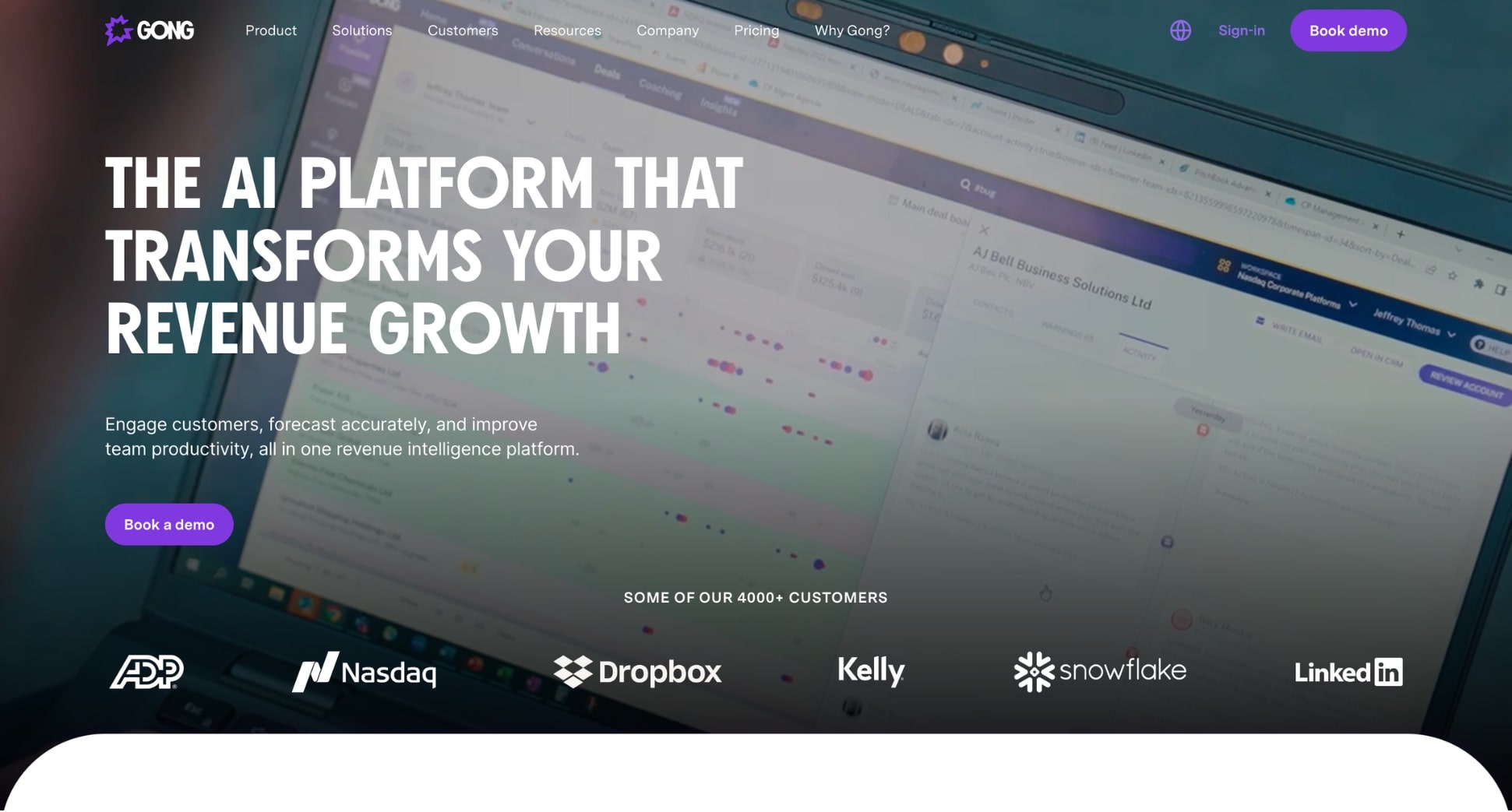
Key features:
- Email templates
- Automatic outbound dialer
- Call recording, monitoring, and transcription
- Customizable dashboard and analytics
- Lead qualification and scoring
- CRM integrations
5. Outreach
4.3/5 ⭐️ on G2
Outreach is a sales engagement platform that can help you automate your outreach, manage follow-ups, and increase pipeline visibility. It’s designed to improve sales productivity by providing an all-in-one platform for managing customer interactions across email, phone, and social media.
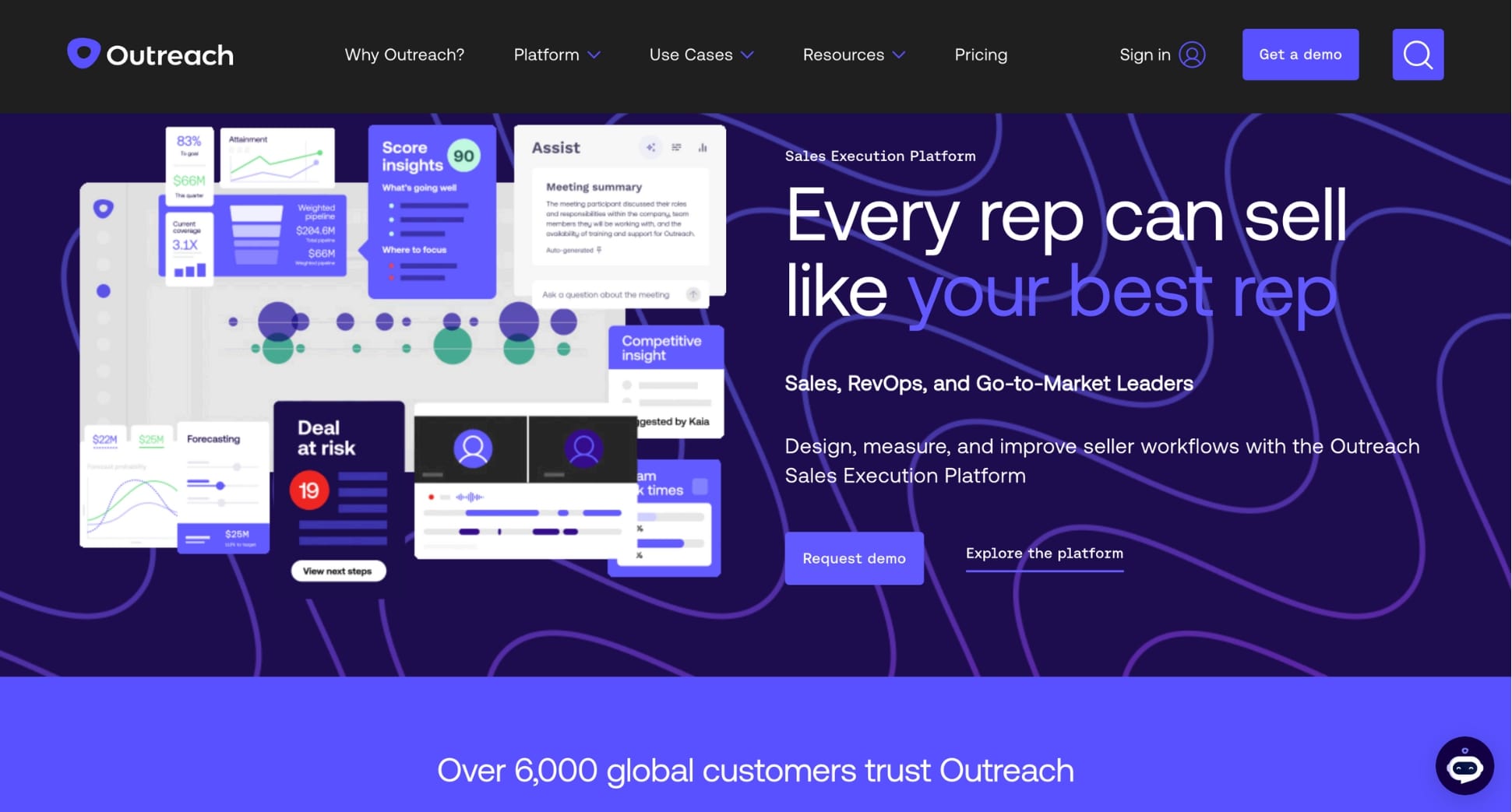
Key features:
- Conversation intelligence
- Multi-channel sales automation
- Automated follow-ups and reminders
- Advanced analytics and reporting
- Sales pipeline management
- CRM integration
6. VanillaSoft
4.6/5 ⭐️ on G2
VanillaSoft is a sales engagement platform that helps you prioritize leads and generate revenue. This tool automatically matches each of your sales reps with “hot” leads based on their skills, workload, and experience. This way, your sales team can connect with potential buyers faster, and communicate with them more effectively.
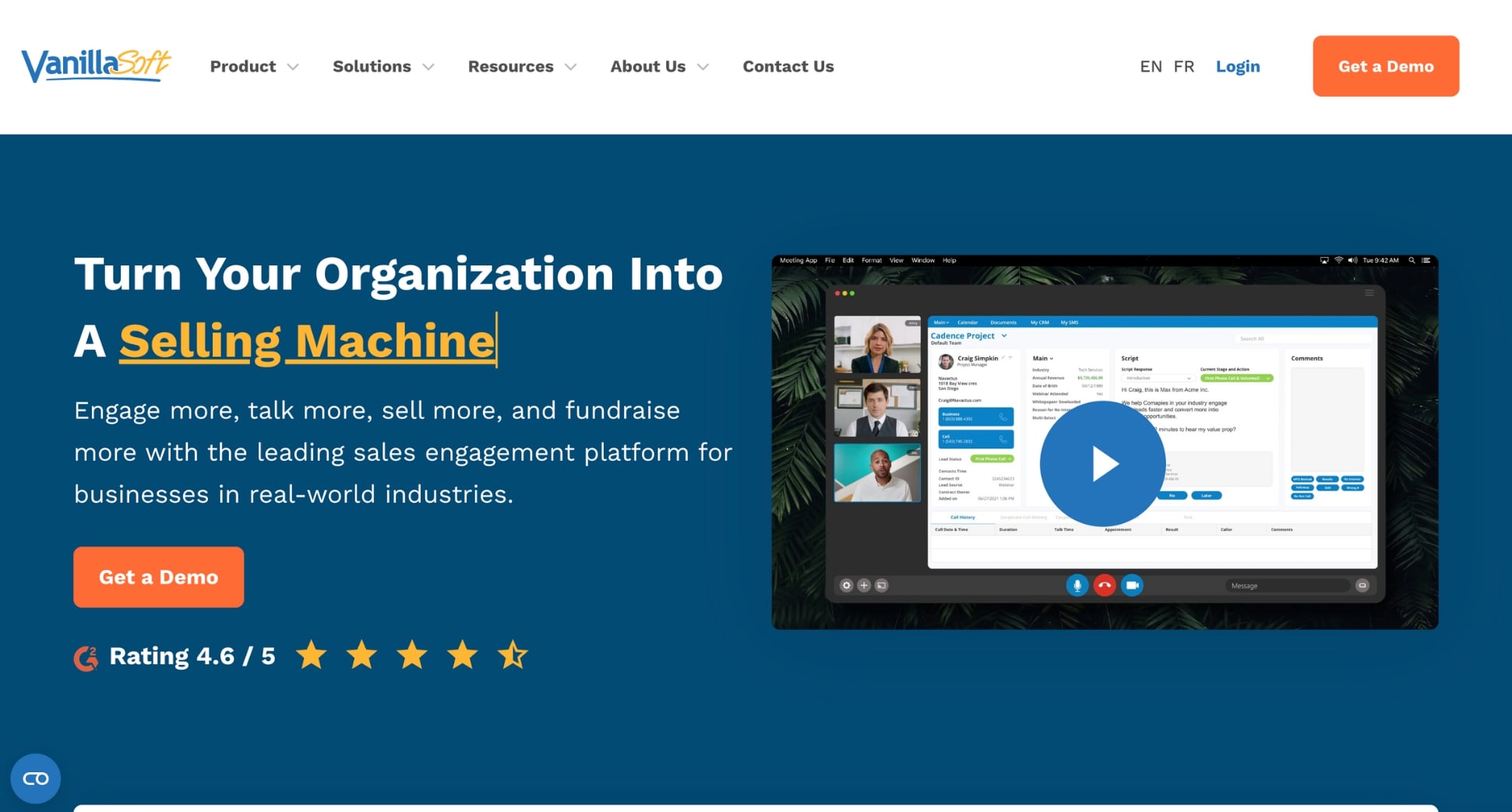
Key features:
- Queue-based lead routing
- Call recording and monitoring
- Auto dialing and logical branch scripting
- Appointment setting and calendar sync
- Real-time activity dashboards
- Email and SMS automation
- CRM integration
7. Lemlist
4.5/5 ⭐️ on G2
Lemlist is a cold email and sales automation platform that lets you create high-ROI outreach campaigns in minutes. You can generate personalized images and videos from scratch to stand out in crowded inboxes and make your recipients feel unique, find new leads via LinkedIn, and connect with them automatically.
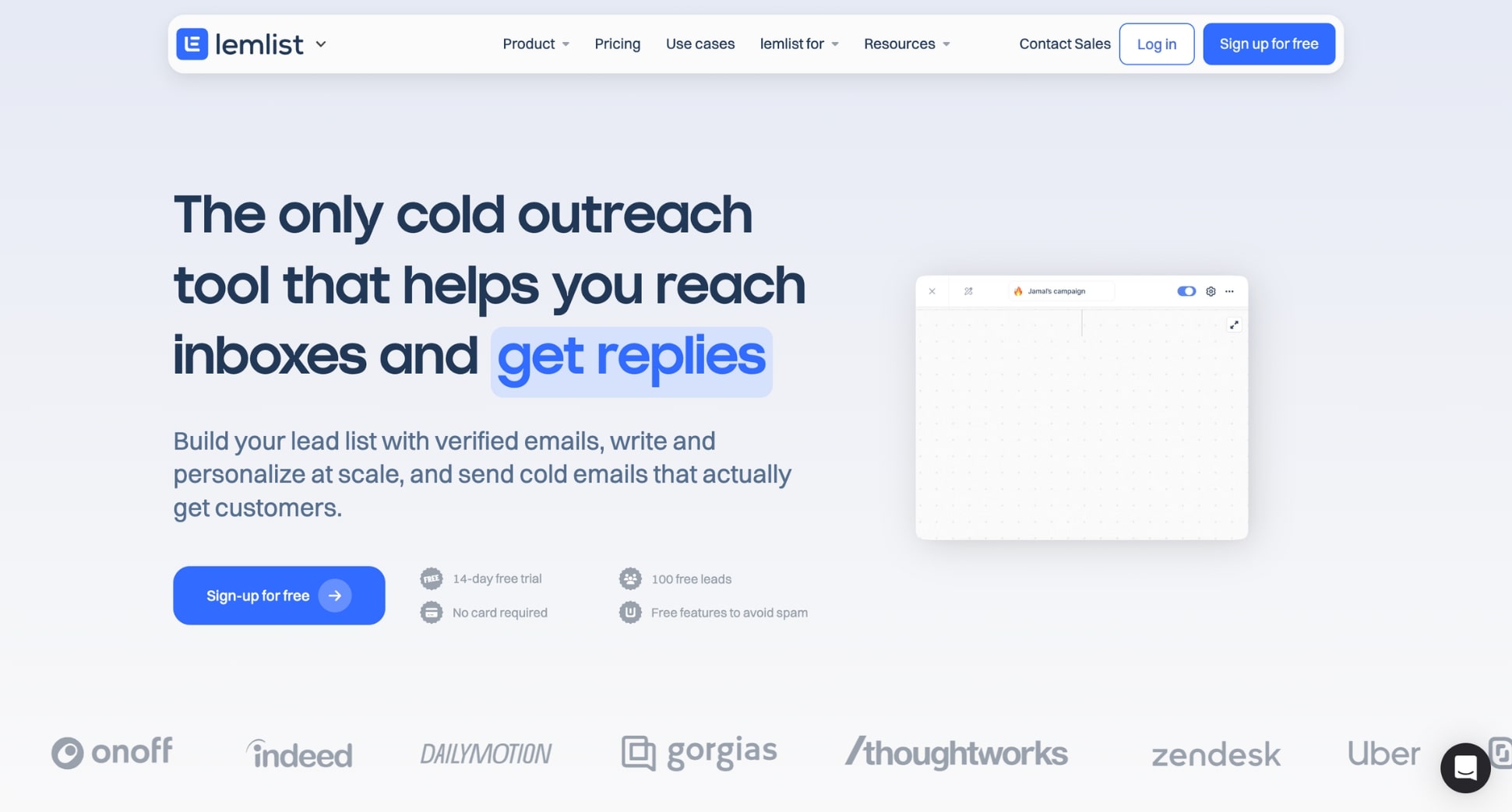
Key features:
- Email warmup tool
- Personalized email templates
- Automated follow-ups and drip campaigns
- LinkedIn outreach
- Email tracking
- A/B testing
8. Woodpecker
4.2/5 ⭐️ on G2
Woodpecker is a cold email automation tool designed to help sales and marketing teams engage with prospects through personalized outreach. It automates follow-ups and provides advanced tracking to ensure that no potential lead is left behind. Woodpecker also integrates with most CRMs, allowing teams to easily manage their lead generation process.

Key features:
- Built-in spam checker
- Personalized email templates
- Automated email sequences and follow-ups
- Unsubscribe management
- Email tracking
- A/B testing
9. Overloop
4.4/5 ⭐️ on G2
Overloop (formerly Prospect.io) is a sales automation and CRM platform that makes lead generation simple. It helps teams of all sizes automate outreach, manage prospects, and track performance through a unified platform. Overloop also integrates with multiple third-party tools. Meaning that you can use this software to create a streamlined workflow for prospecting and closing deals.
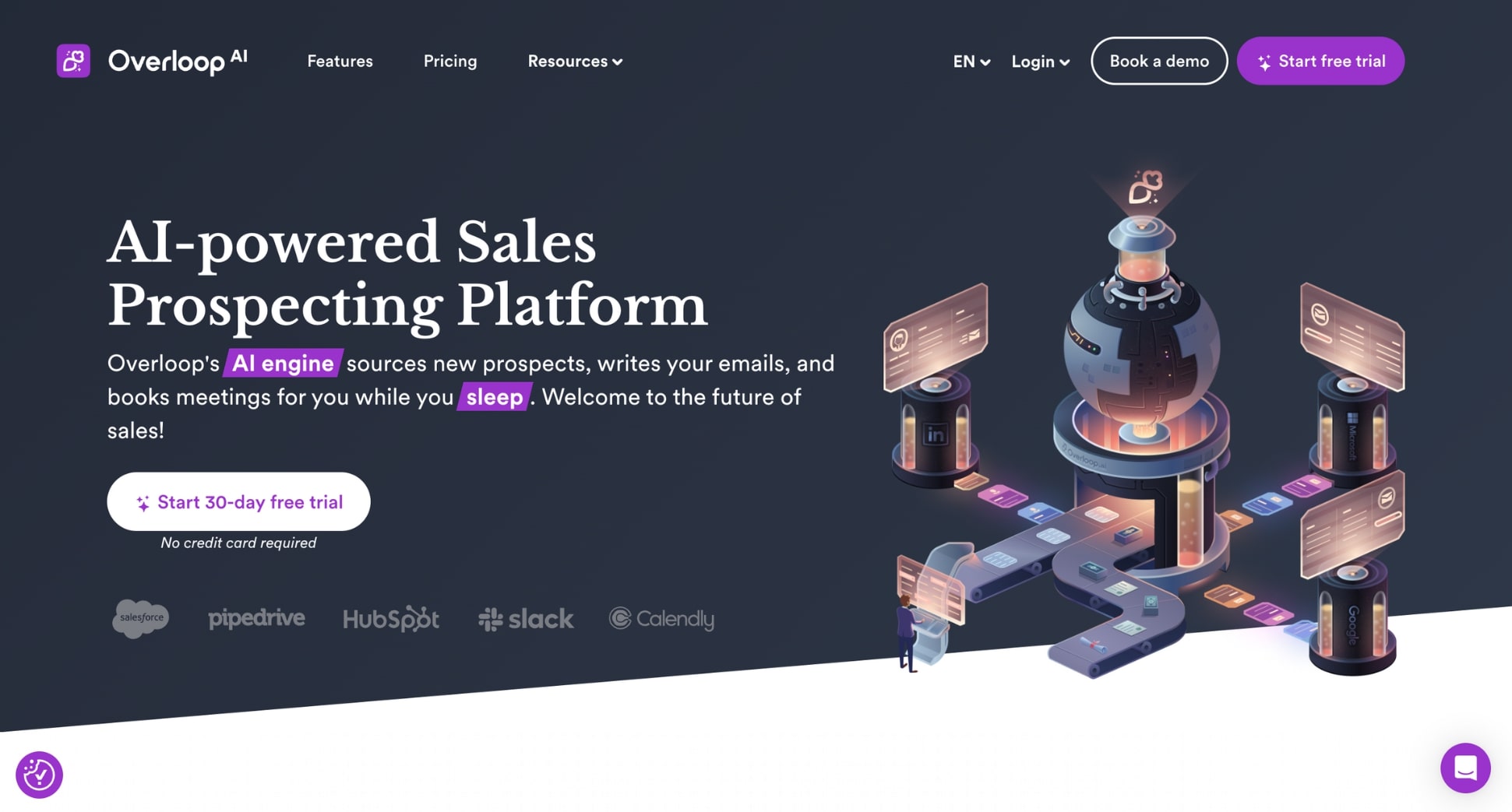
Key features:
- Task automation
- Workflow management
- Automated email campaigns and follow-ups
- Contact management and segmentation
- Integration with CRMs and other tools
- Email tracking
10. Pipedrive
4.3/5 ⭐️ on G2
Pipedrive is a CRM and sales management tool designed to help sales teams focus on the activities that drive revenue. It features an intuitive pipeline interface, making it easy for teams to track and manage leads. Pipedrive also comes with built-in automation features to help you reduce manual tasks, and focus on selling.

Key features:
- Lead scoring
- Visual sales pipeline
- Email templates and follow-up reminders
- Automated workflows and tasks
- AI-powered sales assistant
- Customizable reporting
Choosing the Right Sales Automation Software for Your Business
There are dozens of sales automation tools out there. So, how do you know which one’s right for your business? Well, here are some tips to help you find the best automation software for your needs:
- Ease of use: Choose a software with an intuitive interface that your team can quickly master. Look for clean dashboards and user-friendly features. A steep learning curve can hinder adoption and hurt your ROI.
- Budget: Make sure the pricing structure aligns with your budget and offers good value for the features provided. Consider the total cost, including initial setup, monthly fees, and costs for additional users or features.
- Features: Prioritize features that address your specific pain points and sales process needs. Depending on your situation, this may include lead management, email automation, pipeline visualization, and reporting.
- Integrations: Pick a tool that integrates seamlessly with your existing tech stach, including your CRM, email platform, and other essential tools. This will help you create a smooth workflow and prevent data silos.
- Scalability: Changing from one sales automation tool to another costs time and money. So make sure to select a solution that can grow with your business. Look for tiered pricing plans that allow for easy scaling.
- Security: Verify that the software meets industry-standard security protocols and complies with relevant regulations like GDPR or CCPA. This protects your data and your customers’ information.
- Customer support:A high-quality customer support can help you maximize the software’s potential and quickly resolve potential issues. Look for comprehensive onboarding processes, training resources, and responsive support teams.
Most sales automation tools offer a demo or a free trial. Take the time to test multiple tools and evaluate your options. Involve key stakeholders in the decision-making process, and don’t hesitate to reach out to vendors if you have any questions.
Maximizing Your Sales Potential with Automation
In this article, we’ve shared our top 10 sales automation tools for 2025. But which one should you choose? Here’s what we recommend to grow your business, automate manual tasks, and drive revenue:
- If you need to send personalized cold emails and generate sales, you can use an outreach platform such as Mailmeteor, Lemlist, or Woodpecker.
- If you need to manage leads and build a sales pipeline you might want to use Hubspot, Salesforce, or Overloop.
- If you want to gather high quality data about your leads, Gong is a (very) solid option.
What’s next? You can sign up to Mailmeteor (it’s free!) to automate your outreach. Our free plan lets you send up to 50 emails a day. You can also track emails in real-time, schedule follow-ups, and find new leads.
Happy selling 💌
FAQs- Sales automation tools
What is the difference between CRM and sales automation?
CRM (Customer Relationship Management) focuses on managing customer data and interactions, while sales automation software is designed to streamline repetitive sales processes. Many modern CRM systems incorporate sales automation features, but they’re not identical concepts.
How do sales automation tools integrate with existing systems?
In most cases, sales automation tools integrate via APIs, webhooks, or native connections. Many come with pre-built integrations for popular platforms, allowing them to sync with CRM systems, email platforms, calendaring tools, and other business software to create a seamless flow of data across systems.
What are the potential drawbacks of using sales automation software?
Potential drawbacks include:
- Initial setup time and learning curve
- High costs (especially for small businesses or startups)
- Over-automation leading to poor user experience
- Dependence on technology, which can be problematic if systems fail
- Data security and privacy concerns
- Potential for data silos if not properly integrated
How long does it take to see results from a sales automation tool?
Results can vary based on your sales process and the tool used. You’ll likely notice immediate benefits, like time saved on repetitive tasks, within weeks. More substantial gains, like higher conversion rates or revenue growth, usually appear within 3-6 months of proper implementation.
Is sales automation software suitable for businesses of all sizes?
Yes, but the needs differ:
- Small businesses benefit from basic automation for lead management and follow-ups.
- Medium-sized businesses may need more advanced tools with integration and reporting features.
- Large companies require enterprise-grade solutions with advanced analytics and support for complex sales processes.
Make sure to choose a sales automation program that aligns with your business size, budget, and sales process.


